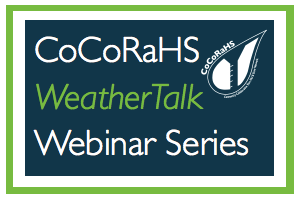If you are interested in learning more about agricultural meteorology, you may be interested in joining this one-hour webinar offered by the CoCoRaHS folks. It is going to be held online on February 26 at 2 pm Eastern Time. You can register at https://www.cocorahs.org/Content.aspx?page=wxtalk. You don’t have to be a CoCoRaHS observer to register. It will also be recorded to view later in case you can’t meet at that time.
Here is the description of the program:
The field of agricultural meteorology may be best described as what it is not. Practitioners of this narrow subset of the meteorology spectrum are not professional forecasters, nor are they restricted to computer modeling or programming. Indeed, some agricultural meteorologists are skilled forecasters and programmers, but those roles are secondary to their expert analysis of the impact of weather on U.S. and global crop yield and production.
Increasingly, however, agricultural meteorologists are adept at layering meteorological and agricultural information in a geographic information system (GIS), and providing up-to-the-minute analysis of agricultural weather impacts as they relate to world agricultural supply and demand. Analysis that was once done by hand, bent over a light table, in hours or days, is now produced in minutes, layer by layer, in a GIS.
At USDA, a small group of five agricultural meteorologists provides weather intelligence for an economic team, which produces the monthly World Agricultural Supply and Demand Estimates. In addition to a support role, the meteorology group releases its own set of products, including the Weekly Weather and Crop Bulletin. And, with its expertise in impact analysis and geographic information systems, the USDA agricultural meteorology group has been instrumental in other roles, such as the development and production of the U.S. Drought Monitor.
